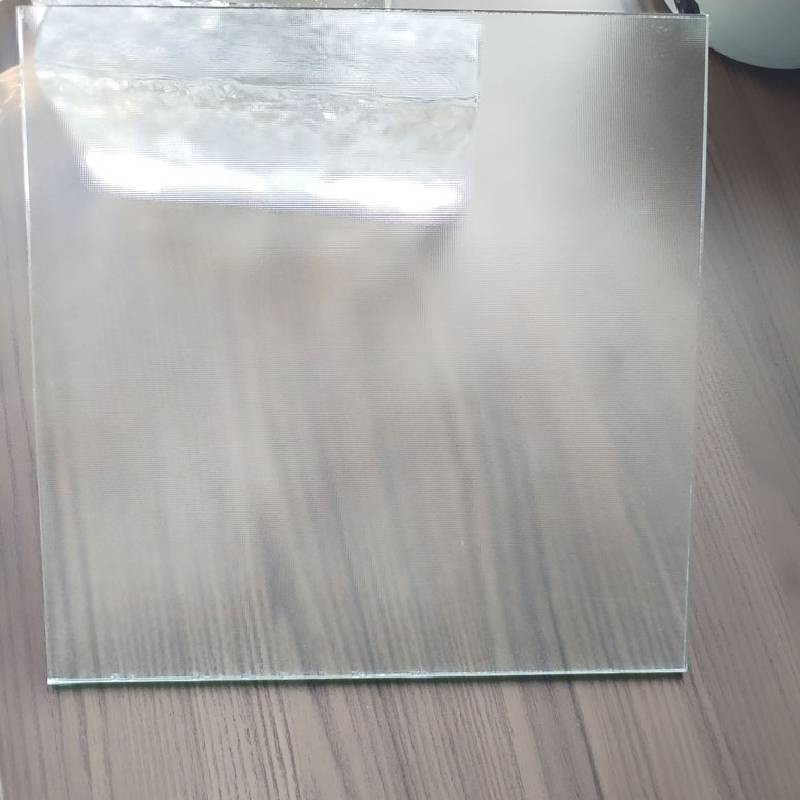The Allure of Textured Ribbed Glass A Design Staple
In recent years, the world of interior design and architecture has seen a resurgence in the use of textured ribbed glass. Combining functionality with aesthetics, ribbed glass serves as a visually striking material that offers numerous applications, from enhancing privacy to bringing an element of sophistication to spaces. This article explores the charm, versatility, and environmental benefits of textured ribbed glass, highlighting why it has become a favored choice among designers and homeowners alike.
History and Evolution
The use of textured glass can be traced back to the late 19th and early 20th centuries, an era renowned for its emphasis on craftsmanship and intricate design. Artisans skillfully created various textures to enhance the glass's visual appeal while serving functional needs—such as manipulating light and providing privacy. Ribbed glass emerged as a popular choice, particularly in architecture and furniture design, as it allowed for the diffusion of natural light while maintaining a degree of seclusion.
As modern design evolved, so did the techniques involved in creating textured glass. Innovations in manufacturing processes have allowed for more consistent quality and the ability to produce large sheets of ribbed glass—making it accessible and cost-effective for various applications. Today, textured ribbed glass can be found in everything from residential windows to commercial office partitions.
Aesthetic Appeal
One of the standout features of textured ribbed glass is its aesthetic versatility. The subtle lines and ridges create intriguing patterns that change with the angle of light, offering a dynamic visual element to any space. This play of light enhances the ambiance by softening harsh sunlight and creating a warm, inviting atmosphere.
Ribbed glass is particularly suitable for mid-century modern and contemporary designs, where clean lines and minimalist decor dominate. Its sleek yet tactile surface adds depth and character to environments without overwhelming other design elements. This adaptability has led to its incorporation in diverse applications, from shower doors and cabinet fronts to room dividers and decorative wall panels.
Functional Benefits
textured ribbed glass
Beyond its beauty, textured ribbed glass offers several practical advantages. Foremost among these is its ability to provide privacy without sacrificing natural light. In bathrooms or offices where light is desired but visibility is not, ribbed glass serves as an ideal solution. The texture obscures shapes and outlines, ensuring spaces remain secluded while still brightened by daylight.
Moreover, ribbed glass is often more durable than standard glass due to its manufacturing process. The texturing effectively strengthens the material, making it resistant to scratches and other wear and tear. This durability is particularly beneficial in high-traffic areas, ensuring that installations maintain both their functionality and aesthetic appeal over time.
Environmental Benefits
As the world becomes increasingly conscious of sustainability, the eco-friendly characteristics of ribbed glass cannot be overlooked. Many manufacturers are now using recycled materials in the production of textured glass, contributing to reduced waste and energy consumption. Additionally, glass is fully recyclable at the end of its life cycle, making it a sustainable choice for environmentally-minded designers and homeowners.
Furthermore, ribbed glass can help in energy efficiency. By allowing natural light to permeate spaces while minimizing glare, it reduces the need for artificial lighting during the day, thus lowering energy consumption and contributing to more sustainable living environments.
Conclusion
Textured ribbed glass stands at the intersection of beauty, functionality, and sustainability. Its rich history and evolution in design showcase its ability to adapt to changing tastes while providing timeless appeal. With its myriad of applications and benefits, ribbed glass not only enhances the aesthetic quality of spaces but also addresses practical concerns, making it a staple material in modern architecture and design.
As homeowners and designers continue to embrace innovative materials, textured ribbed glass is poised to remain a popular choice for those seeking to combine elegance with functionality. Whether used in large installations or as small accents, ribbed glass will undoubtedly continue to illuminate spaces with its unique charm for years to come.
 Afrikaans
Afrikaans  Albanian
Albanian  Amharic
Amharic  Arabic
Arabic  Armenian
Armenian  Azerbaijani
Azerbaijani  Basque
Basque  Belarusian
Belarusian  Bengali
Bengali  Bosnian
Bosnian  Bulgarian
Bulgarian  Catalan
Catalan  Cebuano
Cebuano  Corsican
Corsican  Croatian
Croatian  Czech
Czech  Danish
Danish  Dutch
Dutch  English
English  Esperanto
Esperanto  Estonian
Estonian  Finnish
Finnish  French
French  Frisian
Frisian  Galician
Galician  Georgian
Georgian  German
German  Greek
Greek  Gujarati
Gujarati  Haitian Creole
Haitian Creole  hausa
hausa  hawaiian
hawaiian  Hebrew
Hebrew  Hindi
Hindi  Miao
Miao  Hungarian
Hungarian  Icelandic
Icelandic  igbo
igbo  Indonesian
Indonesian  irish
irish  Italian
Italian  Japanese
Japanese  Javanese
Javanese  Kannada
Kannada  kazakh
kazakh  Khmer
Khmer  Rwandese
Rwandese  Korean
Korean  Kurdish
Kurdish  Kyrgyz
Kyrgyz  Lao
Lao  Latin
Latin  Latvian
Latvian  Lithuanian
Lithuanian  Luxembourgish
Luxembourgish  Macedonian
Macedonian  Malgashi
Malgashi  Malay
Malay  Malayalam
Malayalam  Maltese
Maltese  Maori
Maori  Marathi
Marathi  Mongolian
Mongolian  Myanmar
Myanmar  Nepali
Nepali  Norwegian
Norwegian  Norwegian
Norwegian  Occitan
Occitan  Pashto
Pashto  Persian
Persian  Polish
Polish  Portuguese
Portuguese  Punjabi
Punjabi  Romanian
Romanian  Russian
Russian  Samoan
Samoan  Scottish Gaelic
Scottish Gaelic  Serbian
Serbian  Sesotho
Sesotho  Shona
Shona  Sindhi
Sindhi  Sinhala
Sinhala  Slovak
Slovak  Slovenian
Slovenian  Somali
Somali  Spanish
Spanish  Sundanese
Sundanese  Swahili
Swahili  Swedish
Swedish  Tagalog
Tagalog  Tajik
Tajik  Tamil
Tamil  Tatar
Tatar  Telugu
Telugu  Thai
Thai  Turkish
Turkish  Turkmen
Turkmen  Ukrainian
Ukrainian  Urdu
Urdu  Uighur
Uighur  Uzbek
Uzbek  Vietnamese
Vietnamese  Welsh
Welsh  Bantu
Bantu  Yiddish
Yiddish  Yoruba
Yoruba  Zulu
Zulu 

